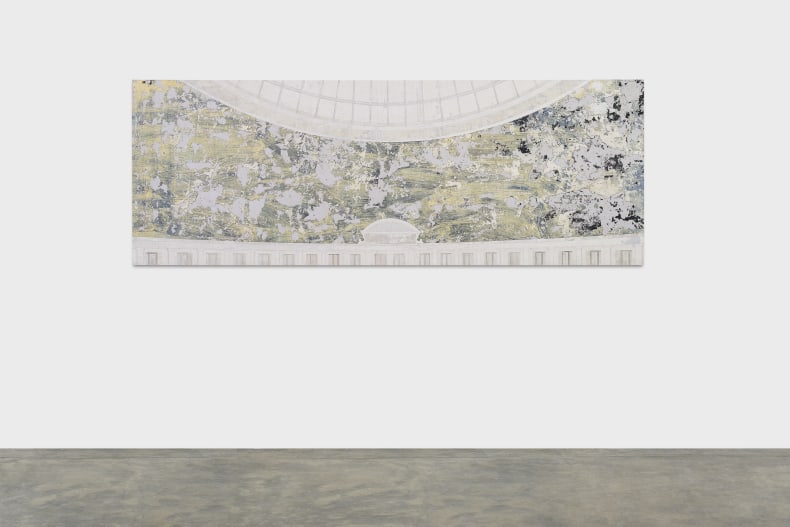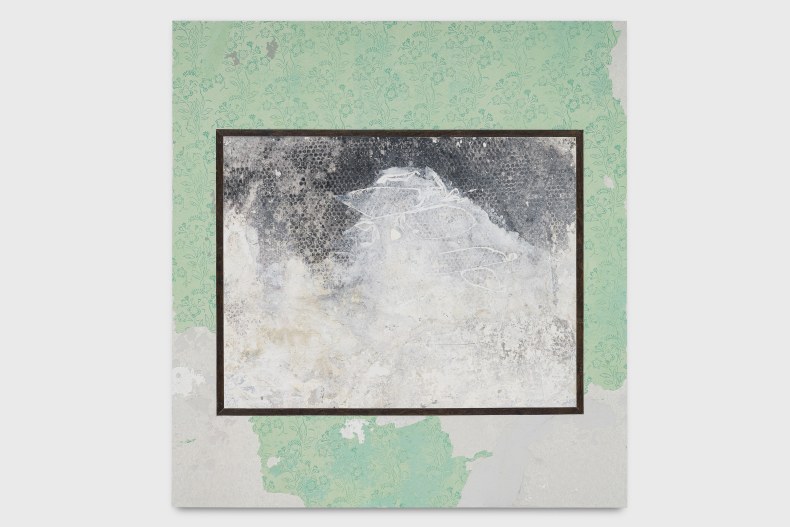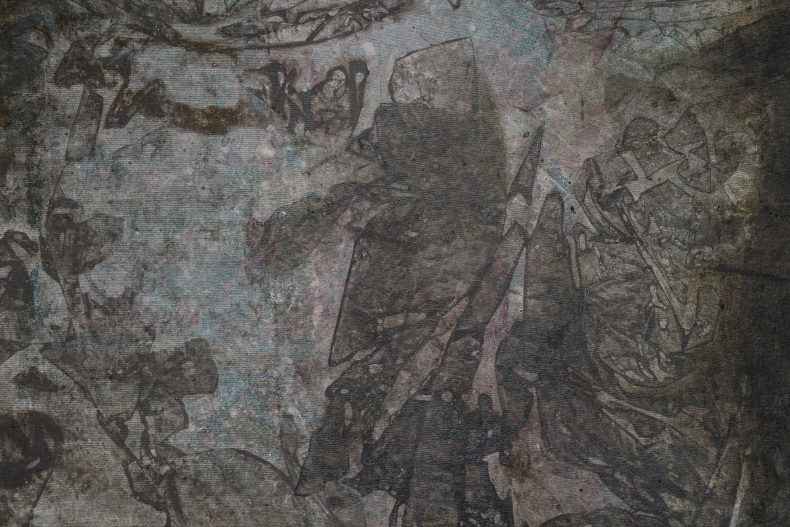Nara Roesler Rio de Janeiro is pleased to present Daniel Senise – I Live Comfortably in the Museum, a solo exhibition by the artist featuring 13 new works produced over the past two years. Created in his new studio, these pieces incorporate new processes and materials, stemming from his long-standing collection of fabric imprints taken since the early 2000s from the floors and walls of ruins, historical sites, or his own workspaces. By meticulously cutting and gluing small sections of these fabrics, Daniel Senise reconstructs the image of the location where the captures were made or recreates other imagined spaces – such as rooms, perspectives, and façades of museums and art institutions. More recently, he has begun adding new materials such as liquid paint, iron powder, bitumen, and charcoal to these printed fabrics.
The exhibition features a critical text by art critic Luiz Armando Bagolin, and its title refers to a phrase spoken by a character in the novel The Invention of Morel by Bioy Casares (1914–1999) – a man sentenced to life imprisonment who, upon arriving on an island, refers to the abandoned building he inhabits as a museum.
Among the works on view are new developments of some of Senise’s most recognized series, such as Museums e Galleries. In these compositions, he juxtaposes printed fabrics to depict museum and gallery interiors, stripped of all elements except those belonging to the architecture itself. According to Bagolin, Senise’s works “function as panels of a museum of the future, in which we will no longer see canonical images, but their absences – what remains of them after time, neglect, and the collapse of the gaze. Nonetheless, this absence is inhabited. Because what we see on these surfaces, prepared like stages for disappearance, is not emptiness, but the memory of the image as a form of survival – as if art, even after being erased, still left a dusting of meaning suspended in the air.” He continues: “Senise’s recent works are not enigmas to be deciphered, but zones of indeterminacy where the image no longer presents itself as a full presence, but rather as interval, noise, or residue. There is no closed discourse here about the end of painting—rather, there is the poetic sustainment of its latency. What is seen is what has not yet fully come into being, but insists on remaining. In times of image saturation, perhaps this is the most radical gesture: to return to painting the power to be gap, silence, and expectation.”
In another group of works, Senise applies materials such as bitumen, charcoal, and iron powder onto the printed fabrics, resulting in stains throughout the composition—an element that, according to the artist, was prominent in his work from the 1980s and 1990s. In this sense, these recent works can be seen as a connection to earlier moments in his practice.
For many years, the artist referred to his printed fabrics as “monotypes,” a term he has since abandoned in favor of “captures.” According to him, these works involve “a transfer of matter. It happens only once. That’s why I used to call them monotypes. But monotype is not necessarily a transfer of matter. These works carry matter that was on the wall.” While many of these captures were historically taken from floors, in recent years, Senise has focused on walls, often retaining several of their surface layers.
























